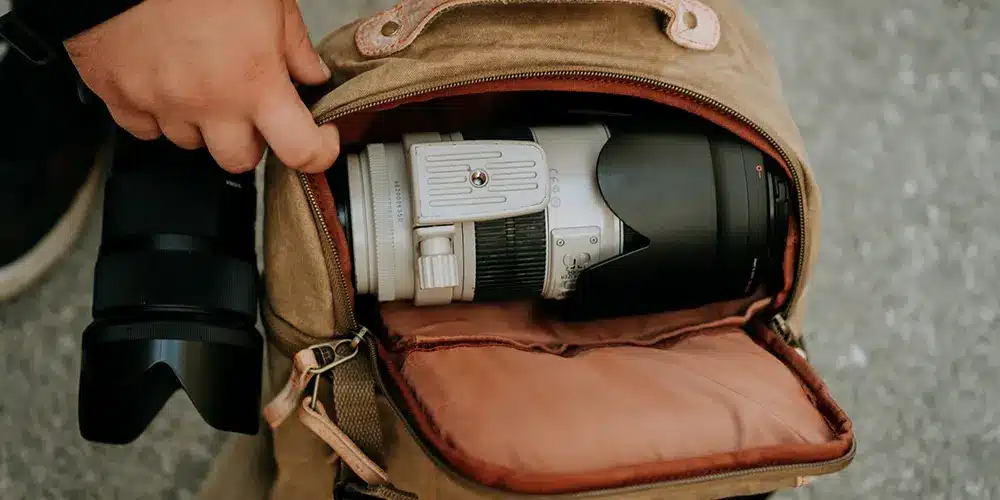

It is essential to pack a hiking backpack efficiently for comfort, safety, and effectiveness while on the trail. In this article, we will include all aspects from choosing the appropriate equipment to strategically positioning items to keep your balance in check.
Efficient packing allows for simple access to critical things while also uniformly distributing weight, relieving pressure on the back and shoulders. If you’re an ultralight backpacker or planning an overnight trip, these ideas will help you pack your backpack effectively, resulting in a more pleasurable and successful hiking adventure.
Choosing the Right Backpack
Backpack Type
Internal frame backpacks are created for stability and comfort, embracing your body to enhance balance. Backpacks with compression straps and external frames are stiffer and provide improved ventilation, making them perfect for transporting heavy loads on clear paths. Every kind of backpack offers advantages based on your hiking requirements. As a beginner trekker, your backpack must be your priority.
Size and Fit
It is basic to have a backpack that suits your outline and contains a durable and comfortable shoulder strap. To decide your middle length, degree from the base of your neck to the best of your midriff. Make beyond any doubt the midriff belt fits solidly around your hips to viably disperse weight and increment consolation.
Features
Important characteristics of a high-quality hiking pack consist of cushioned shoulder straps, adaptable hip belts, and compression straps. Shoulder straps distribute weight evenly, hip belts provide support for your load, and compression straps aid in keeping your gear compact and stable. These characteristics improve comfort and effectiveness while hiking.
Essential Gear to Pack

Shelter
When going on to explore winter trekkings, make sure to bring a trustworthy tent, tarp, or hammock. These offer strong assistance and defense from extreme weather conditions, guaranteeing your warmth and dryness. Select lightweight, waterproof rain jackets, and sturdy choices that can withstand snow and wind.
Sleeping Gear
Do not forget to pack a backpack with a sleeping bag compartment. The resting sack offers warmth, the resting cushion secures from the cold ground, and the liner boosts warm maintenance. By working together, they guarantee a quiet night of rest.
Clothing
Pack the bags with layering clothes that comprise a base layer, insulation layer, and shell layer. Bring additional socks and warm clothing for winter hikes. This system ensures you stay cozy while giving you the flexibility to change layers based on the climate.
Packing Tips for Specific Conditions
Weather Considerations
Smart packing can be the key to dealing with unpredictable weather while hiking. Begin by wearing moisture-wicking base layers and rain cover outerwear to remain dry in rainy or snowy conditions. Bring additional lip balm, and insulation such as fleece or a down jacket for sudden cold weather episodes.
During hot weather, choose breathable attire and wear a wide-brimmed hat to shield yourself from the sun. Be sure to always bring along a small emergency shelter and tools to start a fire in case of unforeseen weather changes. By incorporating adaptable equipment that adjusts to varying situations, you will remain both secure and at ease during your journey.
Terrain Considerations
Various types of terrain require careful and organized packing. When navigating rough terrain, focus on durable shoes with ankle support and think about using trekking poles for added stability. When you are in wooded areas, make sure to bring a dependable navigation device and bug spray.
Sunglasses and sunscreen are needed to protect against the sun in open areas. Make sure to maintain your center and distribute the weight evenly throughout. Adjusting your equipment to suit the specific characteristics of the terrain improves safety and pleasure during each hike.
Duration of the Hike
The distance of your trek determines the items you require during your stay. Think about using lighter options to reduce overall weight. Weekend getaways necessitate extra clothing, food, and shelter choices such as a small tent or bivvy sack. Give importance to lightweight, high-calorie food and bring versatile items to conserve space. Adapting your packing plan based on the length of the hike guarantees you’re ready but not burdened with excess weight.
Additional Safety and Emergency Gear

Navigation Tools
When entering the forests and wild world, navigation tools are vital for staying on track and ensuring a safe hike. A GPS device provides accurate location monitoring and can be a life-saving tool in unfamiliar or isolated locations. Get to know these tools before you start using them, as they will give you the ability to navigate with confidence and react efficiently to any unexpected changes in your route.
First Aid Kit
Personalize your kit by including medications tailored to your requirements, like painkillers or allergy medication. Think about how long and how far you’ll be hiking when choosing what to pack, so you’re ready for any possible medical situations. Frequently inspect and restock your supplies to ensure preparedness for any potential circumstances.
Make The Final Checks and Adjustments
Making sure your backpack is ready before starting the hike requires important inspections and modifications. Make sure the backpack is fitted tightly after packing to avoid discomfort and strain. Make sure to properly adjust the straps and load lifters so that the weight is evenly distributed, achieving a balanced load on both your shoulders and hips.
Perform a last-minute check and detailed examination of the packing, ensuring all necessary items are included and easy to find. This final check before heading out ensures you’re ready for the upcoming adventure, reducing unexpected events and optimizing your comfort. By following these actions, you can ensure that your equipment remains safe and your backpack is set up perfectly for a pleasant and seamless hiking experience.
Conclusion
In summary, becoming skilled at packing your hiking backpack results in comfort, safety, and efficiency during your trek. Every little detail matters, from selecting the appropriate equipment to carefully arranging it for stability. By adhering to these suggestions, you can greatly improve your outdoor adventure, regardless of your level of experience in hiking. Keep in mind, that being ready is essential for fully enjoying the great outdoors. I suggest that you use these learnings for your upcoming trip and inform us about your packing suggestions and adventures in the comments section. Collaboratively, we can enhance one another’s adventures and encourage increased self-assured outdoor explorations.
